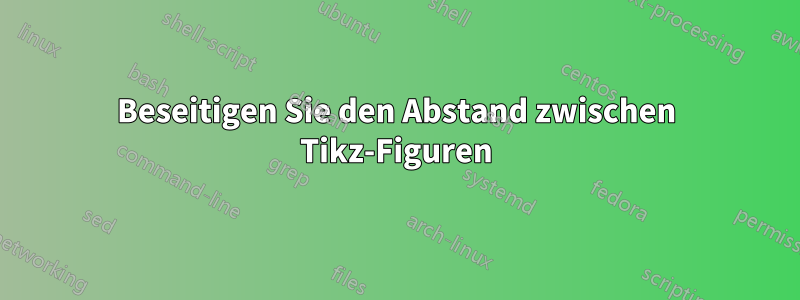
Die folgenden MWE
\documentclass{article}
\usepackage{tikz}
\begin{document}
\noindent{}\begin{tikzpicture}\fill [red] (0,0) rectangle (1,1);\end{tikzpicture}
\begin{tikzpicture}\fill [red] (0,0) rectangle (1,1);\end{tikzpicture}\\
\begin{tikzpicture}\fill [red] (0,0) rectangle (1,1);\end{tikzpicture}
\begin{tikzpicture}\fill [red] (0,0) rectangle (1,1);\end{tikzpicture}
\end{document}
produziert
Ich weiß, dass ich die Leerzeichen mit etwas wie Folgendem beseitigen kann:
\documentclass{article}
\usepackage{tikz}
\begin{document}
\noindent{}\begin{tikzpicture}\fill [red] (0,0) rectangle (1,1);\end{tikzpicture}\hspace*{-0.3em}
\begin{tikzpicture}\fill [red] (0,0) rectangle (1,1);\end{tikzpicture}\\[-1pt]
\begin{tikzpicture}\fill [red] (0,0) rectangle (1,1);\end{tikzpicture}\hspace*{-0.3em}
\begin{tikzpicture}\fill [red] (0,0) rectangle (1,1);\end{tikzpicture}
\end{document}
aber dazu muss ich den Abstand manuell feinabstimmen und es scheint fehleranfällig zu sein. Gibt es eine automatische Möglichkeit, den Leerraum (sowohl horizontal als auch vertikal) zwischen den Figuren zu beseitigen?
Antwort1
tabularSie können ein mit entsprechend eingestellten Parametern verwenden :
\documentclass{article}
\usepackage{tikz}
\newenvironment{pics}
{\par\raggedright % maybe \centering
\setlength\tabcolsep{0pt}\renewcommand{\arraystretch}{0}%
\begin{tabular}{*{10}c}}
{\end{tabular}\par}
\begin{document}
\begin{pics}
\begin{tikzpicture}\fill [red] (0,0) rectangle (1,1);\end{tikzpicture} &
\begin{tikzpicture}\fill [red] (0,0) rectangle (1,1);\end{tikzpicture} \\
\begin{tikzpicture}\fill [red] (0,0) rectangle (1,1);\end{tikzpicture} &
\begin{tikzpicture}\fill [red] (0,0) rectangle (1,1);\end{tikzpicture}
\end{pics}
\bigskip
\begin{pics}
\begin{tikzpicture}\fill [red] (0,0) rectangle (1,1);\end{tikzpicture} &
\begin{tikzpicture}\fill [red] (0,0) rectangle (1,1);\end{tikzpicture} &
\begin{tikzpicture}\fill [red] (0,0) rectangle (1,1);\end{tikzpicture} &
\begin{tikzpicture}\fill [red] (0,0) rectangle (1,1);\end{tikzpicture} \\
\begin{tikzpicture}\fill [red] (0,0) rectangle (1,1);\end{tikzpicture} &
\begin{tikzpicture}\fill [red] (0,0) rectangle (1,1);\end{tikzpicture} &
\begin{tikzpicture}\fill [red] (0,0) rectangle (1,1);\end{tikzpicture} &
\begin{tikzpicture}\fill [red] (0,0) rectangle (1,1);\end{tikzpicture} &
\begin{tikzpicture}\fill [red] (0,0) rectangle (1,1);\end{tikzpicture}
\end{pics}
\end{document}
Antwort2
Die horizontalen Lücken werden erklärt durch Andrew'sKommentar: Leerzeichen an Zeilenenden zwischen den Umgebungen.
Da die Bilder größer als der Basiszeilenabstand sind, verwendet TeX das Register, \lineskipum die Kästchen in vertikaler Richtung zu trennen:
\documentclass{article}
\usepackage{tikz}
\begin{document}
\noindent
\begin{tikzpicture}\fill [red] (0,0) rectangle (1,1);\end{tikzpicture}%
\begin{tikzpicture}\fill [red] (0,0) rectangle(1,1);\end{tikzpicture}%
\\[-\lineskip]
\begin{tikzpicture}\fill [red] (0,0) rectangle (1,1);\end{tikzpicture}%
\begin{tikzpicture}\fill [red] (0,0) rectangle (1,1);\end{tikzpicture}%
\end{document}





